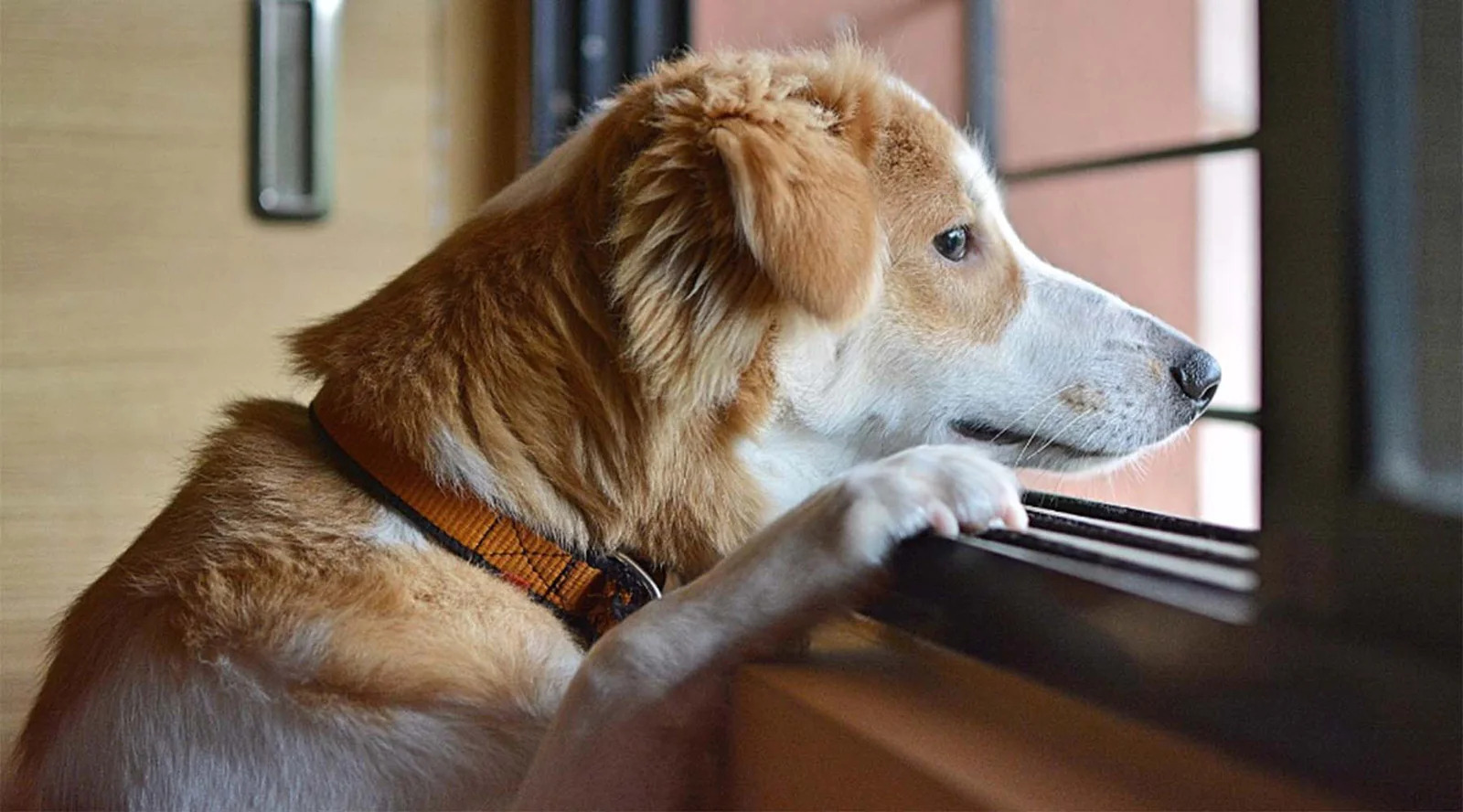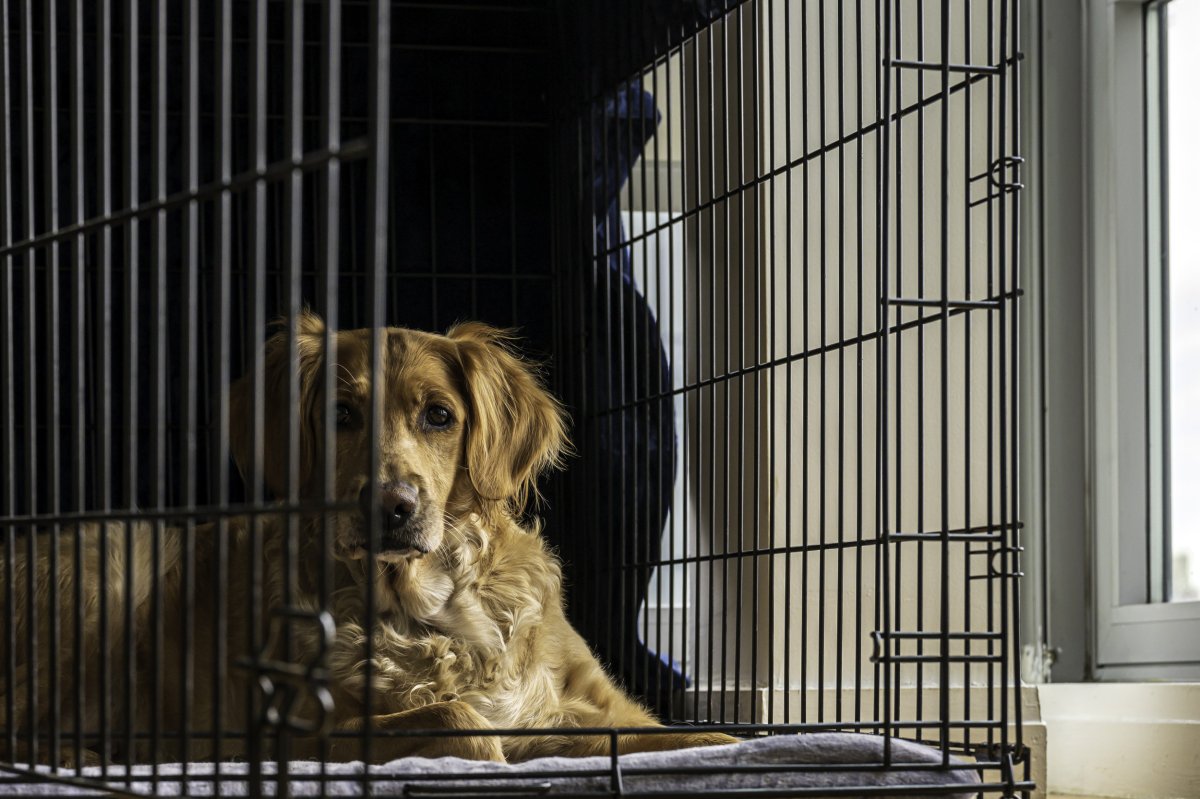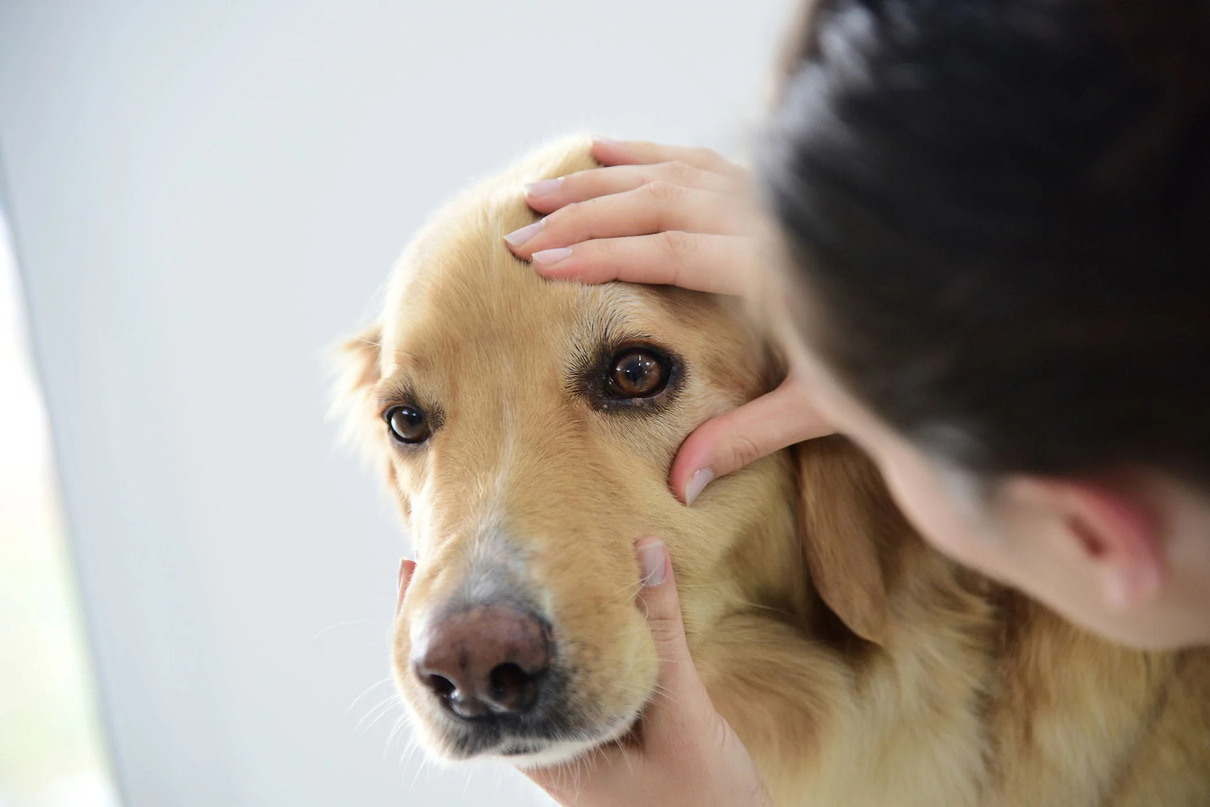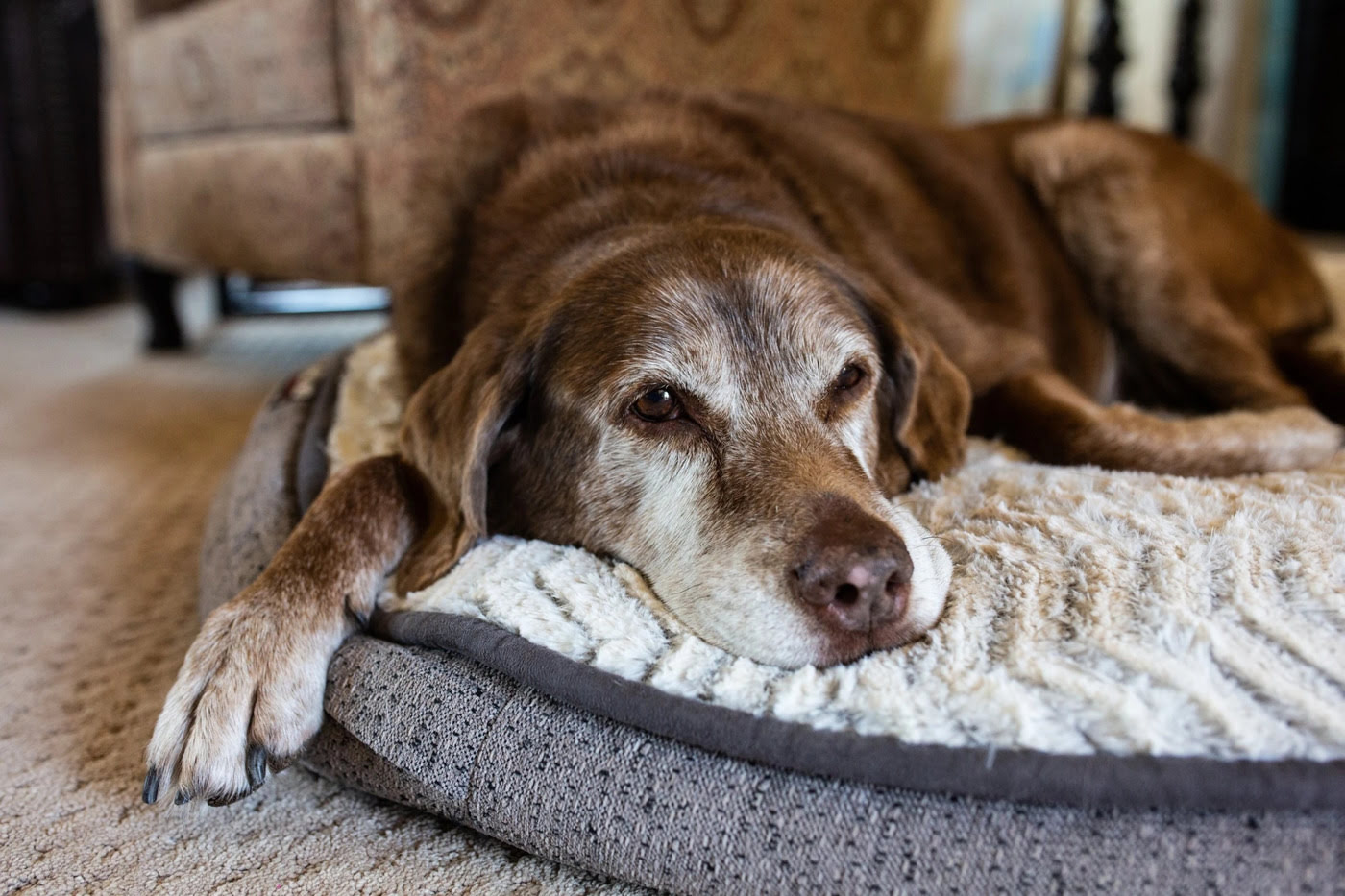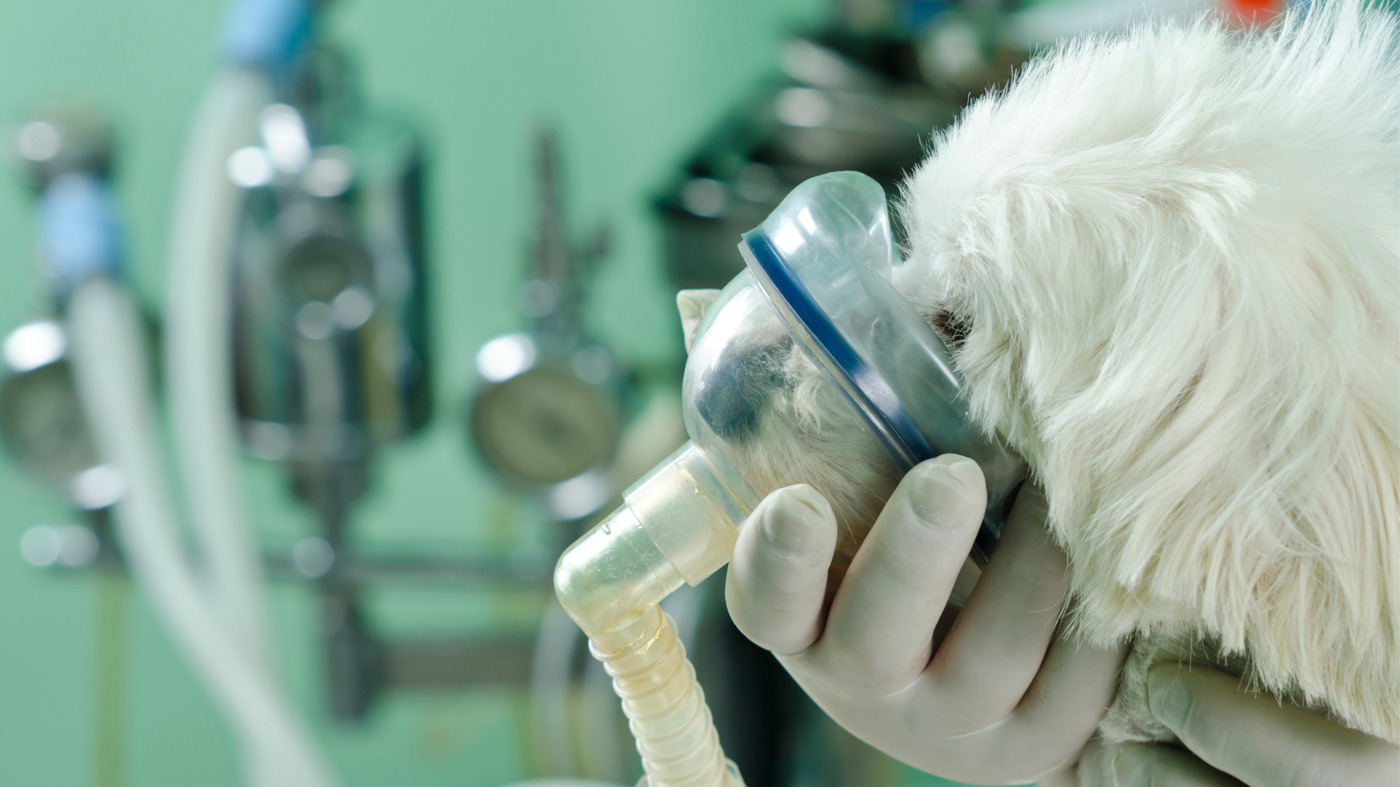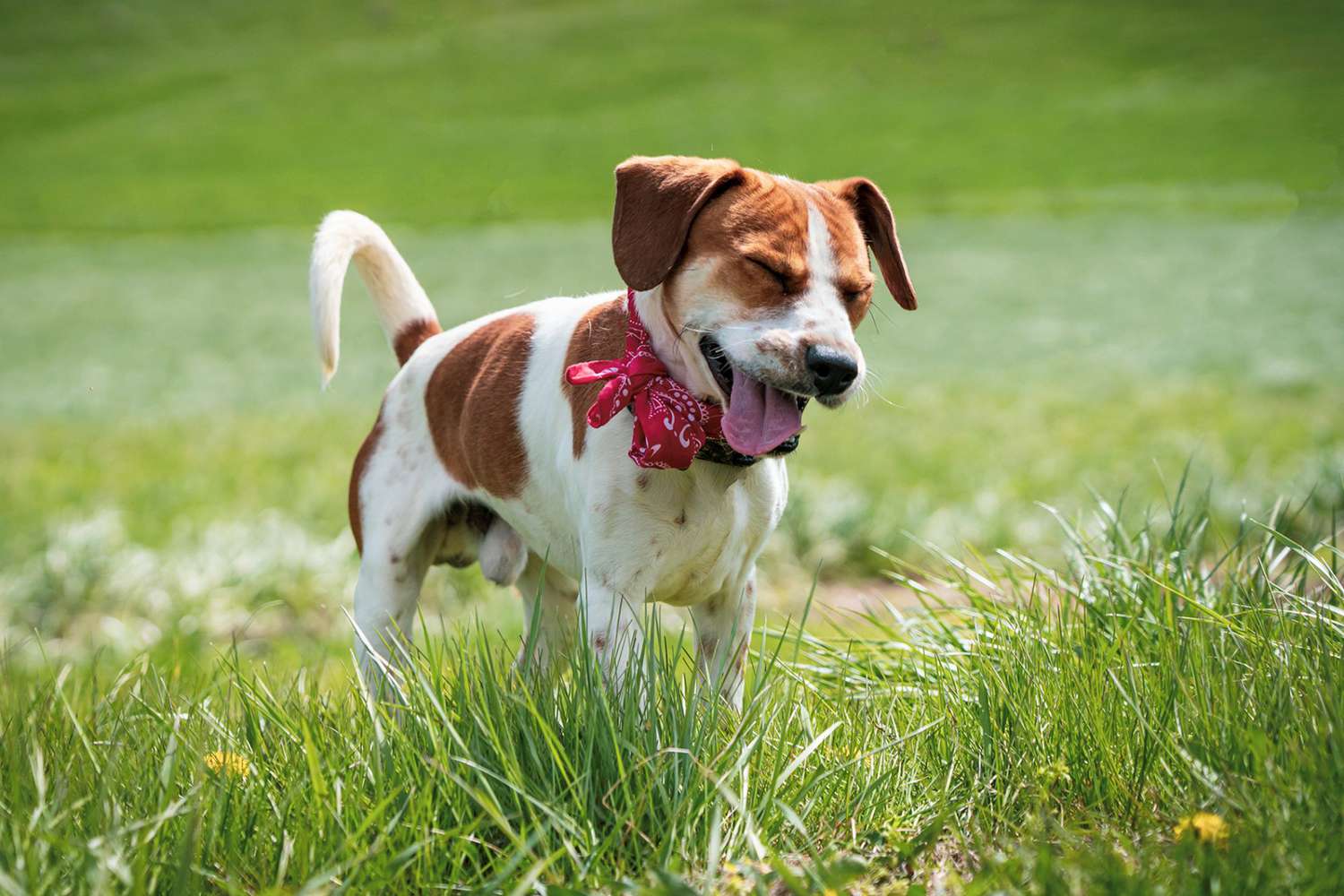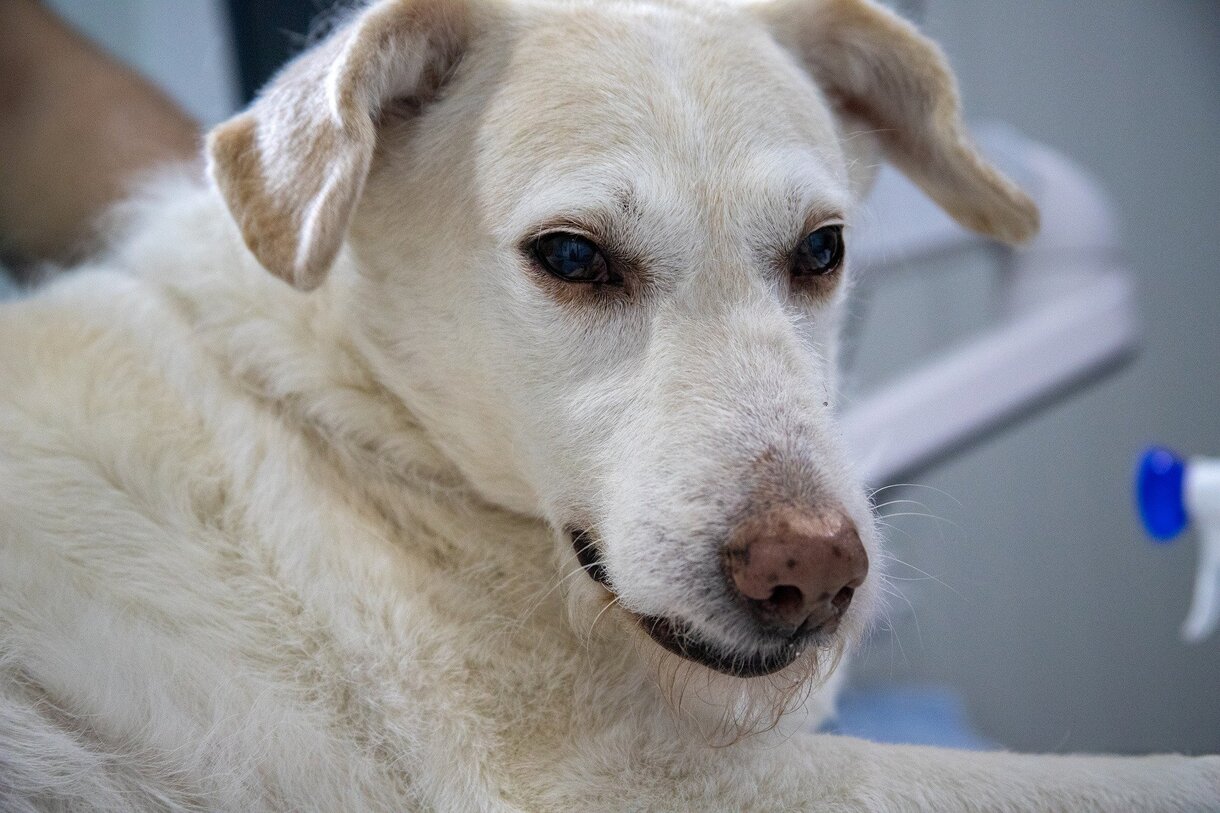Home>Health & Wellness>Behavior & Cognitive Care>How To Help Dog With Crate Anxiety
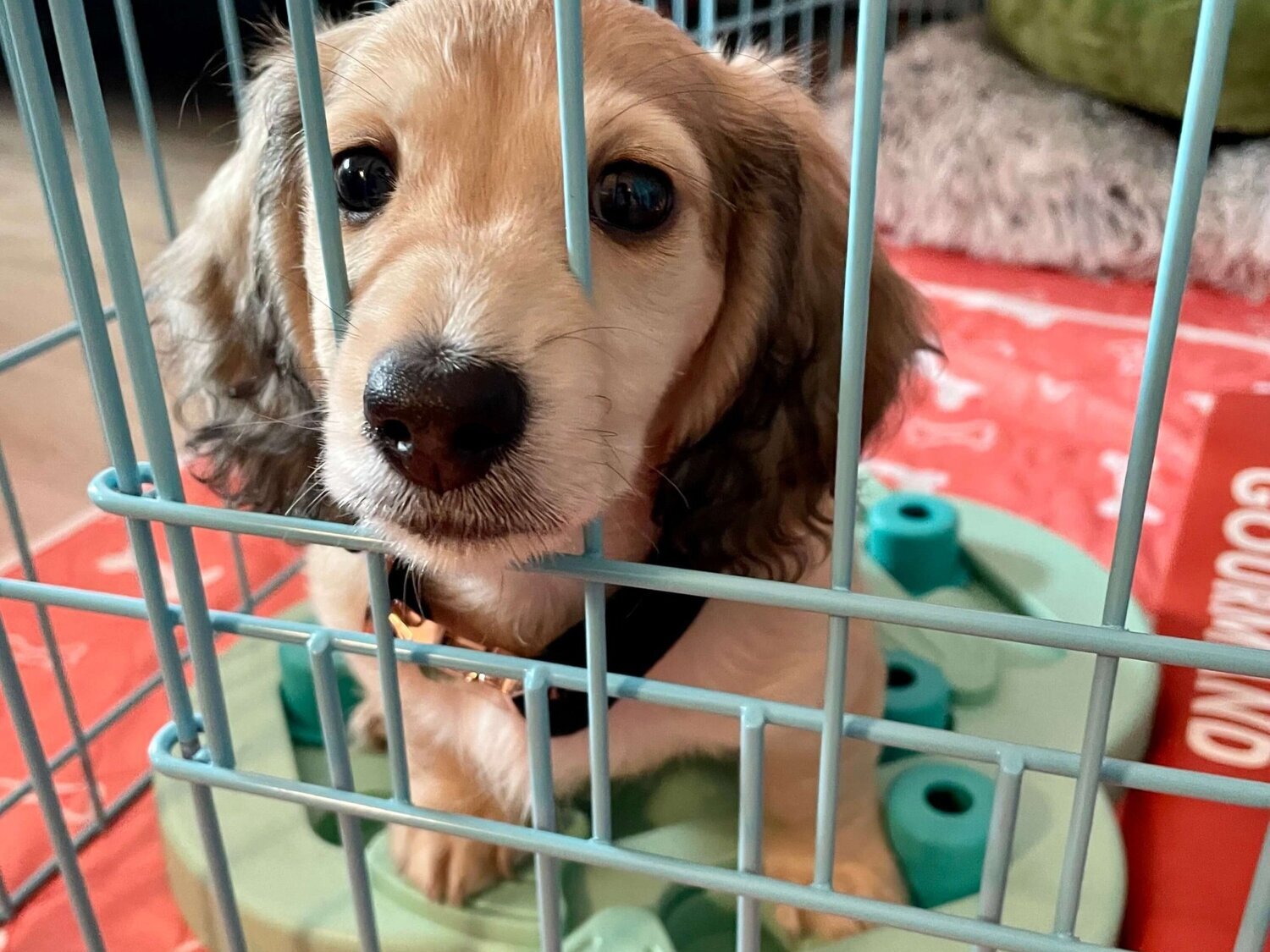

Behavior & Cognitive Care
How To Help Dog With Crate Anxiety
Published: January 30, 2024
Learn effective strategies to help your dog overcome crate anxiety with behavior and cognitive care techniques. Ease your pet's stress and create a positive crate experience.
(Many of the links in this article redirect to a specific reviewed product. Your purchase of these products through affiliate links helps to generate commission for Pawsomeoldies.com, at no extra cost. Learn more)
Table of Contents
Understanding Crate Anxiety in Dogs
Crate anxiety, also known as "crate aversion" or "crate phobia," is a common issue that many dog owners encounter. It refers to a state of distress or unease experienced by dogs when confined in a crate. This anxiety can manifest in various ways, such as whining, barking, pacing, panting, or even attempting to escape the crate. Understanding the root causes of crate anxiety is crucial in addressing and alleviating this issue for our furry companions.
Read more: How To Help Dogs With Anxiety At Night
Causes of Crate Anxiety
Fear of Isolation
Dogs are social animals and often experience distress when separated from their human family members. Being confined in a crate can amplify this feeling of isolation, leading to anxiety and stress.
Negative Associations
If a dog has had negative experiences in the crate, such as being confined for extended periods without positive reinforcement, they may develop a strong aversion to it. This can lead to anxiety whenever they are placed in the crate.
Lack of Positive Exposure
Some dogs may not have been properly introduced to the crate in a positive and gradual manner, leading to apprehension and anxiety when confined in this unfamiliar space.
Previous Trauma
Dogs that have experienced trauma, such as being abandoned or mistreated, may associate the confinement of a crate with past negative experiences, triggering anxiety and fear.
Signs of Crate Anxiety
It's essential for dog owners to recognize the signs of crate anxiety, which may include:
- Excessive whining or barking when placed in the crate
- Pacing or restlessness
- Attempts to escape the crate, leading to potential injury
- Panting, drooling, or trembling
- Refusal to enter the crate
By understanding the underlying causes and recognizing the signs of crate anxiety, dog owners can take proactive steps to address this issue and help their furry friends feel more comfortable and secure in their crate.
Creating a Positive Association with the Crate
Introducing the crate as a positive and inviting space is fundamental in helping dogs overcome crate anxiety. By associating the crate with positive experiences, we can transform it from a source of distress to a place of comfort and security for our canine companions. Here are effective strategies to create a positive association with the crate:
1. Gradual Introduction
Introduce the crate gradually, allowing the dog to explore it at their own pace. Place enticing treats, toys, or a comfortable blanket inside to make it inviting. This gradual approach helps the dog view the crate as a welcoming and non-threatening space.
Read more: How To Help Aggressive Anxiety In Dogs
2. Positive Reinforcement
Encourage the dog to enter the crate voluntarily by using positive reinforcement techniques. Offer treats, praise, or a favorite toy when they willingly enter the crate. This positive association reinforces the idea that the crate is a rewarding and enjoyable place to be.
3. Mealtime in the Crate
Associate the crate with positive experiences by feeding the dog their meals inside the crate. This creates a positive link between mealtime, a pleasurable activity, and the crate, fostering a sense of comfort and security.
4. Interactive Play
Engage in interactive play near the crate to show the dog that it is a part of their everyday environment. Tossing a ball or playing with their favorite toy near the crate can help them associate it with fun and enjoyable moments.
5. Calm and Relaxing Environment
Create a calm and relaxing atmosphere around the crate. Soft background music or soothing scents can help promote a sense of tranquility, making the crate a peaceful retreat for the dog.
Read more: How Does A Therapy Dog Help With Anxiety
6. Avoiding Negative Associations
Refrain from using the crate as a form of punishment. It's crucial to prevent any negative associations with the crate, as this can exacerbate anxiety and hinder the process of creating a positive connection.
By implementing these strategies consistently and patiently, dog owners can effectively cultivate a positive association with the crate, ultimately helping their furry companions feel at ease and secure in this designated space.
Gradual Desensitization to the Crate
Gradual desensitization is a proven technique to help dogs overcome crate anxiety by slowly acclimating them to the crate in a positive and non-threatening manner. This approach aims to desensitize the dog to any negative associations or fears they may have developed towards the crate, ultimately fostering a sense of comfort and security in this space.
The key to successful gradual desensitization lies in patience, consistency, and a deep understanding of the dog's behavior and emotional responses. Here's a detailed breakdown of the gradual desensitization process:
Step 1: Familiarization
Begin by placing the crate in a familiar and comfortable environment where the dog spends most of their time. This could be in a living room or any area where the family congregates. Keep the crate door open and allow the dog to explore it at their own pace. Placing familiar items such as their favorite blanket or toys inside the crate can make it more inviting and less intimidating.
Step 2: Positive Reinforcement
Encourage the dog to approach the crate by using positive reinforcement techniques. Offer treats, verbal praise, or gentle petting when they show curiosity or interest in the crate. This positive association helps the dog view the crate as a place of positivity and rewards.
Read more: How To Help Your Dog With Storm Anxiety
Step 3: Gradual Encouragement
Once the dog is comfortable being near the crate, gently encourage them to step inside using treats or toys. Avoid forcing or rushing the process, as this can trigger anxiety. Instead, allow the dog to approach the crate voluntarily, reinforcing the idea that it is a safe and enjoyable space.
Step 4: Short Intervals
As the dog becomes more at ease with the crate, gradually introduce short periods of confinement with the door open. Encourage them to enter the crate with a treat or a favorite toy and allow them to exit at their own will. This step helps the dog associate the crate with freedom and choice, reducing any feelings of confinement or restriction.
Step 5: Increasing Duration
Over time, gradually increase the duration of time the dog spends in the crate with the door closed. Begin with short intervals, such as a few minutes, and gradually extend the duration as the dog becomes more relaxed and comfortable. It's essential to observe the dog's behavior and body language during this process, ensuring that they remain calm and at ease.
Step 6: Positive Endings
Always conclude crate time on a positive note. When it's time to let the dog out of the crate, offer praise, treats, or a short play session. This reinforces the idea that being in the crate leads to positive outcomes and further strengthens the positive association.
By following these gradual desensitization steps with patience and empathy, dog owners can effectively help their furry companions overcome crate anxiety and develop a positive relationship with their crate. This approach not only alleviates anxiety but also creates a safe and comforting space for the dog, promoting their overall well-being and happiness.
Read more: How To Help My Dog Overcome Noise Anxiety
Providing Comfort and Security in the Crate
Ensuring that the crate serves as a haven of comfort and security is pivotal in helping dogs overcome crate anxiety. By creating a nurturing environment within the crate, dog owners can significantly alleviate their furry companions' stress and apprehension. Here are essential strategies to provide comfort and security in the crate:
1. Cozy Bedding
Introducing soft and comfortable bedding inside the crate can enhance the dog's overall sense of comfort. Opt for plush blankets or a cozy dog bed to create a warm and inviting space, encouraging the dog to view the crate as a snug retreat.
2. Familiar Scents
Incorporating familiar scents, such as a piece of clothing with the owner's scent or a favorite toy, can offer reassurance to the dog. These familiar scents provide a sense of security and familiarity, helping to ease any anxiety associated with being confined in the crate.
3. Adequate Space
Ensuring that the crate provides sufficient space for the dog to stand, turn around, and lie down comfortably is essential. A cramped or restrictive environment can exacerbate feelings of confinement and discomfort, leading to heightened anxiety.
Read more: How To Help My Dog’s Anxiety From Fireworks
4. Calming Music or White Noise
Playing soothing music or white noise near the crate can create a calming ambiance, promoting relaxation and tranquility. This auditory stimulation can help drown out external noises and create a serene atmosphere within the crate.
5. Dim Lighting
Maintaining a dimly lit environment around the crate can contribute to a sense of security and relaxation. Soft, ambient lighting or partially covering the crate with a blanket can create a cozy and den-like atmosphere, aiding in reducing anxiety.
6. Interactive Toys
Providing interactive and engaging toys, such as puzzle feeders or chew toys, can offer mental stimulation and alleviate boredom while in the crate. These toys not only provide a source of entertainment but also help distract the dog from any feelings of unease.
By implementing these strategies, dog owners can transform the crate into a sanctuary of comfort and security for their canine companions. This nurturing environment not only helps alleviate crate anxiety but also fosters a positive and reassuring association with the crate, ultimately promoting the well-being and contentment of the dog.
Using Calming Aids and Supplements
In some cases, incorporating calming aids and supplements can be beneficial in helping dogs manage crate anxiety. These aids are designed to promote relaxation, reduce stress, and alleviate anxiety, providing an additional layer of support for dogs struggling with crate aversion. When used in conjunction with positive training techniques and a nurturing crate environment, calming aids and supplements can contribute to a holistic approach in addressing canine anxiety.
1. Calming Pheromones
Calming pheromone products, such as diffusers, sprays, or collars, release synthetic versions of natural pheromones that mimic those produced by lactating mother dogs. These pheromones have been shown to have a soothing effect on dogs, helping to reduce anxiety and create a sense of security. When introduced in the vicinity of the crate, calming pheromones can aid in creating a calming and reassuring environment for the dog.
2. Herbal Supplements
Herbal supplements formulated specifically for canine anxiety, such as chamomile, valerian root, or passionflower, can offer natural calming effects. These supplements are often available in various forms, including chews, treats, or liquid drops. When administered as directed, herbal supplements can help promote relaxation and reduce stress levels in dogs, potentially easing their discomfort associated with crate confinement.
3. CBD Products
CBD (cannabidiol) products designed for pets have gained popularity for their potential calming and anxiety-reducing properties. CBD oil or treats formulated for dogs may help alleviate stress and promote a sense of calmness. It's important for dog owners to consult with a veterinarian to ensure the appropriate dosage and suitability of CBD products for their individual dog's needs.
4. Anxiety Wraps
Anxiety wraps, also known as pressure wraps or calming vests, apply gentle, constant pressure to the dog's body, similar to the concept of swaddling a baby. This pressure can have a calming effect on dogs, potentially reducing anxiety and promoting relaxation. When used during crate time, anxiety wraps can provide an additional source of comfort for dogs experiencing crate anxiety.
5. Consultation with a Veterinarian
Before introducing any calming aids or supplements, it's crucial for dog owners to seek guidance from a veterinarian. A professional evaluation can help determine the underlying causes of the dog's anxiety and ensure that the selected calming aids and supplements are safe and appropriate for the dog's specific needs. Additionally, veterinarians can provide tailored recommendations based on the dog's health, temperament, and individual circumstances.
By incorporating these calming aids and supplements thoughtfully and under the guidance of a veterinarian, dog owners can potentially enhance their efforts in helping their furry companions overcome crate anxiety. When used in conjunction with positive training methods and a supportive crate environment, calming aids and supplements can contribute to creating a more relaxed and comfortable experience for dogs during crate time.
Seeking Professional Help for Severe Cases
In instances where dogs exhibit severe and persistent crate anxiety despite diligent efforts to address the issue, seeking professional help becomes imperative. Professional intervention can provide valuable insights, specialized guidance, and tailored strategies to effectively manage and alleviate severe cases of crate anxiety in dogs.
Veterinary Consultation: Initiating the process of seeking professional help often begins with consulting a veterinarian. A thorough veterinary evaluation can help rule out any underlying medical conditions that may be contributing to the dog's anxiety. Additionally, veterinarians can offer expert advice on behavioral interventions, potential medication options, and holistic approaches to address the dog's anxiety in the context of their overall health and well-being.
Certified Dog Behaviorist or Trainer: Engaging the expertise of a certified dog behaviorist or trainer with experience in addressing anxiety-related behaviors can offer invaluable support. These professionals possess a deep understanding of canine behavior and can conduct a comprehensive assessment to identify the specific triggers and underlying factors contributing to the dog's severe crate anxiety. They can then develop a customized behavior modification plan tailored to the individual dog, incorporating desensitization techniques, counter-conditioning methods, and positive reinforcement strategies to gradually alleviate the dog's distress and reshape their perception of the crate.
Behavior Modification Programs: Professional behavior modification programs, often conducted under the guidance of a certified behaviorist, can provide structured and systematic interventions to address severe crate anxiety. These programs may involve gradual exposure to the crate in a controlled environment, implementation of desensitization protocols, and the use of specialized training techniques to modify the dog's emotional response to crate confinement. Additionally, behavior modification programs may incorporate environmental enrichment, mental stimulation activities, and management strategies to create a supportive and stress-reducing environment for the dog.
Collaborative Approach: In severe cases of crate anxiety, a collaborative approach involving the dog's veterinarian, behaviorist, and the dog owner is essential. This collaborative effort ensures that all aspects of the dog's physical and behavioral well-being are addressed comprehensively. Open communication and a unified approach among the professionals involved can lead to a cohesive and effective treatment plan tailored to the dog's specific needs and circumstances.
By seeking professional help for severe cases of crate anxiety, dog owners can access specialized expertise, evidence-based interventions, and personalized support to address their canine companion's distress. With a multidisciplinary approach and a focus on the dog's welfare, professional intervention can significantly improve the dog's quality of life and well-being while fostering a positive and anxiety-free relationship with the crate.
